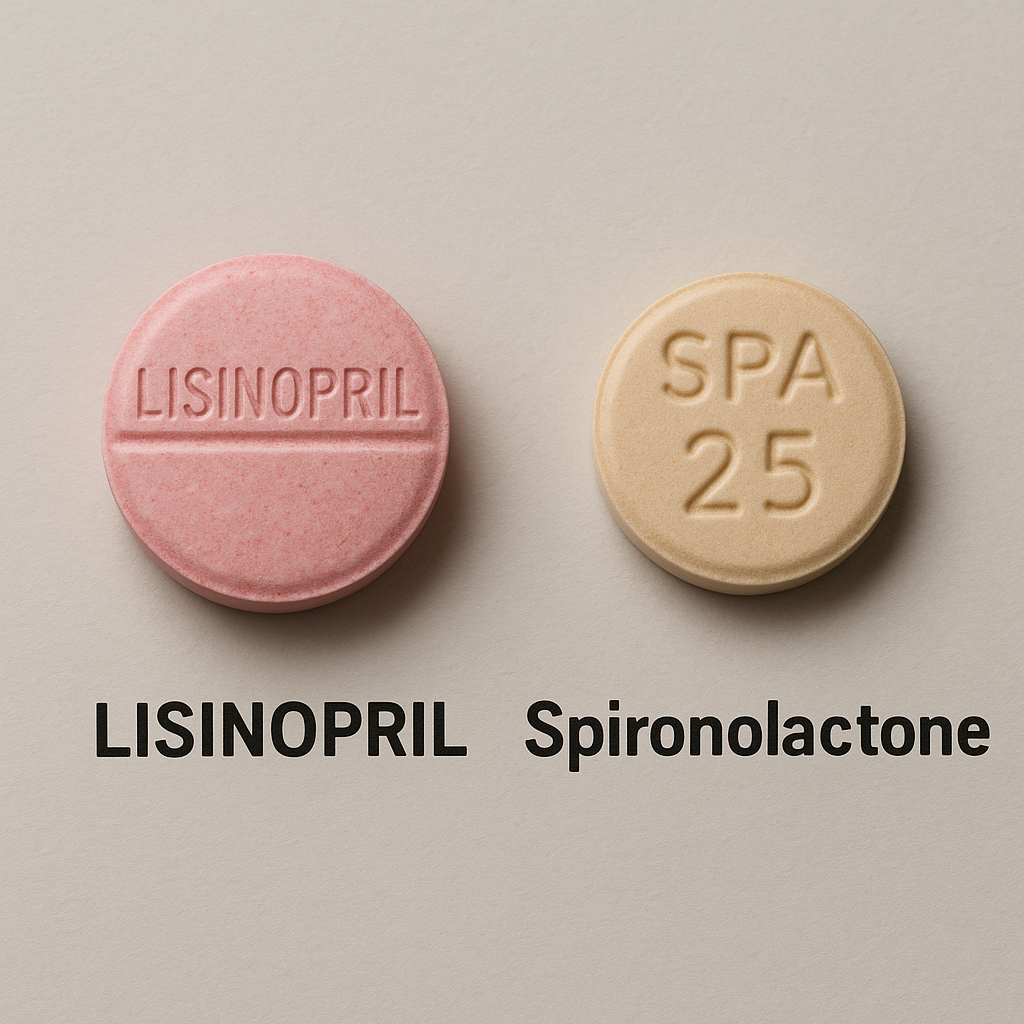Introduction
Heart failure and certain types of hypertension often require multiple medications to manage effectively. Among the therapeutic options, angiotensin-converting enzyme (ACE) inhibitors and spironolactone, a mineralocorticoid receptor antagonist, are frequently used. When combined, these two drug classes can offer synergistic benefits—but also carry potential risks that require careful monitoring.

Mechanism of Action
- ACE Inhibitors (e.g., enalapril, lisinopril):
- Block the conversion of angiotensin I to angiotensin II, a potent vasoconstrictor.
- Reduce aldosterone secretion, decreasing sodium and water retention.
- Lower blood pressure and reduce cardiac remodeling in heart failure.
- Spironolactone:
- Blocks aldosterone receptors in the distal renal tubules.
- Promotes sodium excretion and potassium retention.
- Reduces myocardial fibrosis and vascular damage related to aldosterone.
Why Combine?
Although ACE inhibitors reduce aldosterone levels, this effect is incomplete and transient—a phenomenon called “aldosterone escape.” Spironolactone directly blocks aldosterone action, complementing the effects of ACE inhibitors. This combination is particularly beneficial in:
- Heart Failure with Reduced Ejection Fraction (HFrEF):
Improves survival, reduces hospitalization, and improves symptoms (RALES trial). - Resistant Hypertension:
Adding spironolactone can help lower blood pressure when ACE inhibitors and other drugs are insufficient. - Post-Myocardial Infarction:
Reduces cardiac remodeling and improves long-term outcomes when added to ACE inhibitors.
Benefits of the Combination
- Neurohormonal Modulation: Dual blockade of the renin-angiotensin-aldosterone system (RAAS).
- Improved Cardiovascular Outcomes: Shown to reduce mortality and morbidity in heart failure patients.
- Potassium-Sparing Effect: Useful in hypokalemic patients, though care is needed to avoid hyperkalemia.
- Renal Protective Effects: When dosed carefully, may reduce proteinuria and slow progression in some chronic kidney disease (CKD) patients.
Risks and Adverse Effects
- Hyperkalemia:
- The most significant concern. Both drugs retain potassium.
- Risk increases in the elderly, diabetics, and those with CKD.
- Requires frequent monitoring of serum potassium and renal function.
- Hypotension:
- Especially in volume-depleted patients or when started at high doses.
- Worsening Renal Function:
- ACE inhibitors can reduce glomerular filtration, especially when combined with diuretics or in patients with bilateral renal artery stenosis.
- Gynecomastia and Menstrual Irregularities:
- Due to anti-androgenic effects of spironolactone.
Clinical Considerations and Monitoring
- Start low doses of spironolactone (e.g., 12.5–25 mg/day).
- Avoid potassium supplements or other potassium-sparing agents concurrently.
- Monitor:
- Serum potassium and creatinine at baseline, within 1 week of starting or changing doses, and periodically thereafter.
- Blood pressure and signs of volume depletion.
Conclusion
The combination of spironolactone and ACE inhibitors offers a powerful strategy in the treatment of heart failure and resistant hypertension. By addressing both angiotensin II and aldosterone-mediated pathways, this regimen can improve patient outcomes significantly. However, the benefits must be balanced with the potential for hyperkalemia and renal dysfunction, making careful patient selection and vigilant monitoring essential.

Thanks for this explicit explanation 🙏